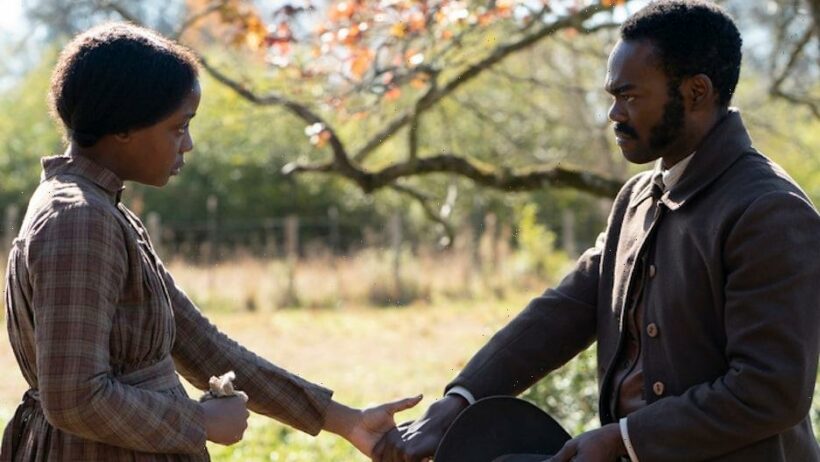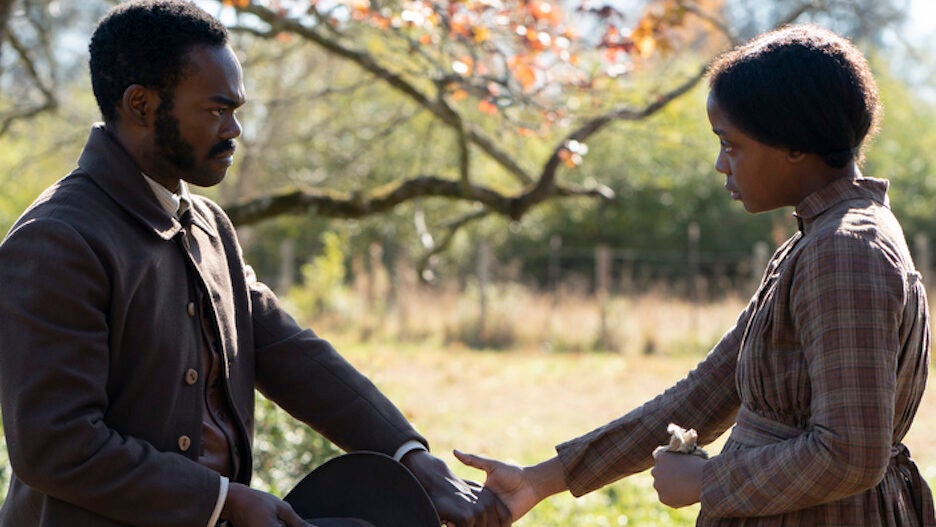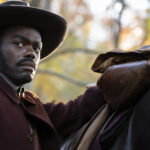While watching the 10 episodes over a 24-hour period, I sought consolation by reminding myself it’s fiction based on ancient history, but who was I kidding?
Amazon Prime
Nine years after writing “all men are created equal” in the Declaration of Independence, Thomas Jefferson published a book called “Notes on the State of Virginia” in which he suggested Black people might not actually be human beings. In this work of nonfiction, the future third U.S. president hung Blacks on an evolutionary rung barely above orangutans, writing: “I advance it as suspicion only that the Blacks, whether originally a distinct race or made distinct by time and circumstances, are inferior to Whites in the endowments both of body and mind.”
The question of Black humanity lingers over “The Underground Railroad,” a 10-episode Amazon Prime miniseries directed and written by Oscar winner Barry Jenkins (“Moonlight”) that dropped on May 14. Based on the 2016 Pulitzer Prize-winning novel of the same name by Colson Whitehead, the sprawling adaptation follows the journey of Cora, a Georgia slave played by Thuso Mbedu, as she rides the Underground Railroad — an actual subterranean train system, unlike the symbolic Underground Railroad from U.S. history books — to escape her life of bondage.
Through Cora’s story, “The Underground Railroad” chronicles the experience of being Black in America and having to navigate an obstacle course in which the color of your skin can be figurative shackles as immobilizing as the literal ones that once bound us. It’s an extended allegory of a Black and White America, one that can be as dehumanizing to Blacks in 2021 as it was during the first half of the 19th century.
As a Black viewer, one of the first things I noticed on the Randall plantation in Georgia where the story begins is that slaves are treated worse than cattle. Individual Blacks are referred to as “it,” and those who run away are hunted by slave catchers like game. Adults are forced to mate (sometimes while the master looks on), so female slaves can “breed” future generations of exploitable property, babies one plantation overseer refers to as “pups.”
South Carolina, the first stop along Cora’s journey after she escapes using the Underground Railroad, is, for narrative purposes, a free state, and she takes a job there as part of a museum’s slavery exhibit. Pretending to pick cotton behind a glass partition for the amusement of White visitors, she’s like an animal in a zoo. White supremacy has brainwashed even free Blacks into considering themselves as subhuman. One Black maintenance worker on the railroad refers to customers not as passengers but as “human freight.”
Joel Edgerton’s Ridgeway, a slave catcher and the main antagonist, has a lower opinion of Blacks, one that springs less from hate than utter indifference. He explains the divine brutality of the American caste system through the concept of Manifest Destiny. The so-called “American imperative” is, he insists, God’s will. Whites are born to take what is rightfully theirs while controlling “lesser” races by lifting them up, or subjugating them, or exterminating them.
Throughout Cora’s odyssey, she wears her status as not-quite-human like a second skin, even in states where local governments have banned slavery. Crossing state lines with Cora feels like venturing into different countries. North and South Carolina seem to be at least a century apart. It’s like the red state/blue state divide in high relief, where no two red or two blue states are alike.
In South Carolina, Blacks are free but being surreptitiously used by Whites as scientific experiments, much like rats in a lab. In North Carolina, both slavery and Blacks have been outlawed, reflecting an extreme form of segregation decades before Jim Crow.
Even up North in Indiana, where free Blacks have formed their own self-contained and self-sustaining Rosewood-like community called Valentine, the specter of White supremacy looms, threatening to crush at whim the accomplishments of its Black citizens. Rather than uplift themselves through prayer and Negro spirituals, Valentine’s residents recite the Declaration of Independence at community gatherings, and their soundtrack includes not “Ain’t Gonna Study War No More,” but the music of European classical master Claude Debussy.
The early scenes in Valentine offer the only respite from persistent Black degradation. Despite the looming threat of a White takeover, they stand in stark contrast to the beatings on the Randall plantation that serve as entertainment to White onlookers and warnings to Black ones. As I watched Randall publicly punish a slave after a runaway attempt by whipping him until his skin comes off and then setting him on fire, images of a White cop strangling George Floyd with his knee as an audience of witnesses looked on flashed through my mind.
That scene’s relevance to contemporary times underscores how the passage of centuries haven’t corrected racial justice. For Black Americans, running away from one’s master was the antebellum antecedent of resisting arrest, also punishable by death. Filmed back in 2019 and set in the years after the Missouri Compromise, “The Underground Railroad” feels almost prescient in 2021, as unarmed Blacks increasingly lose their lives to police gunfire and states like Georgia and Florida have passed laws many interpret as being designed to limit the voting rights of Black people.
While watching the 10 episodes over a 24-hour period, I sought consolation by reminding myself it’s fiction based on ancient history, but who was I kidding? For too many Blacks, this is still America, a place that continues to lift us up, subjugate us and exterminate us — just in different ways. It’s an ongoing nightmare that doesn’t exist solely in the past or only in a frighteningly disturbing miniseries.
Source: Read Full Article





